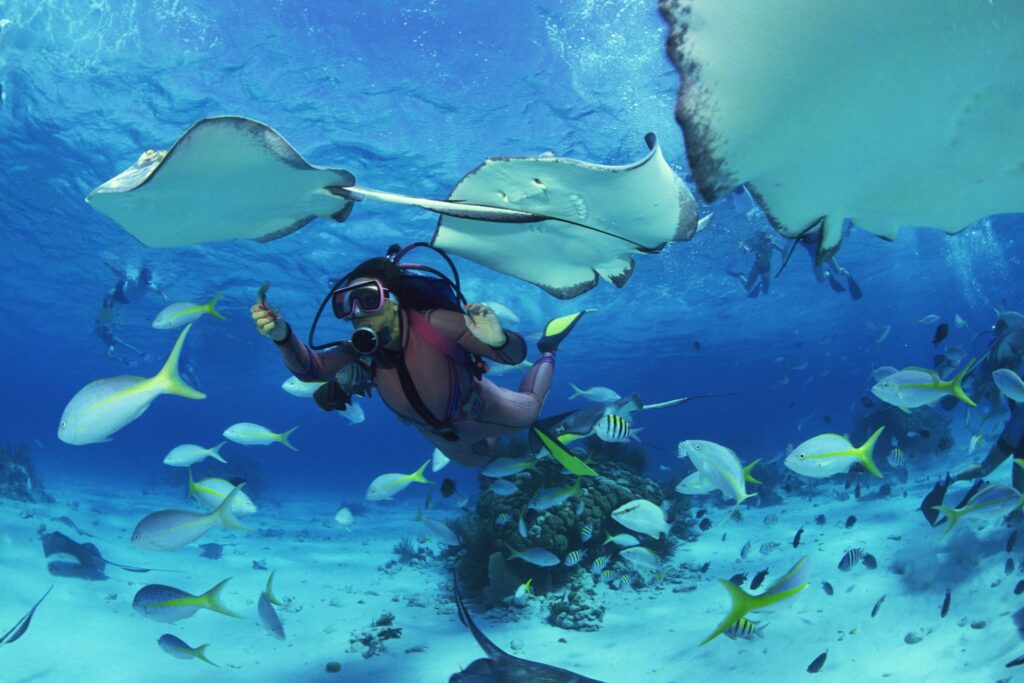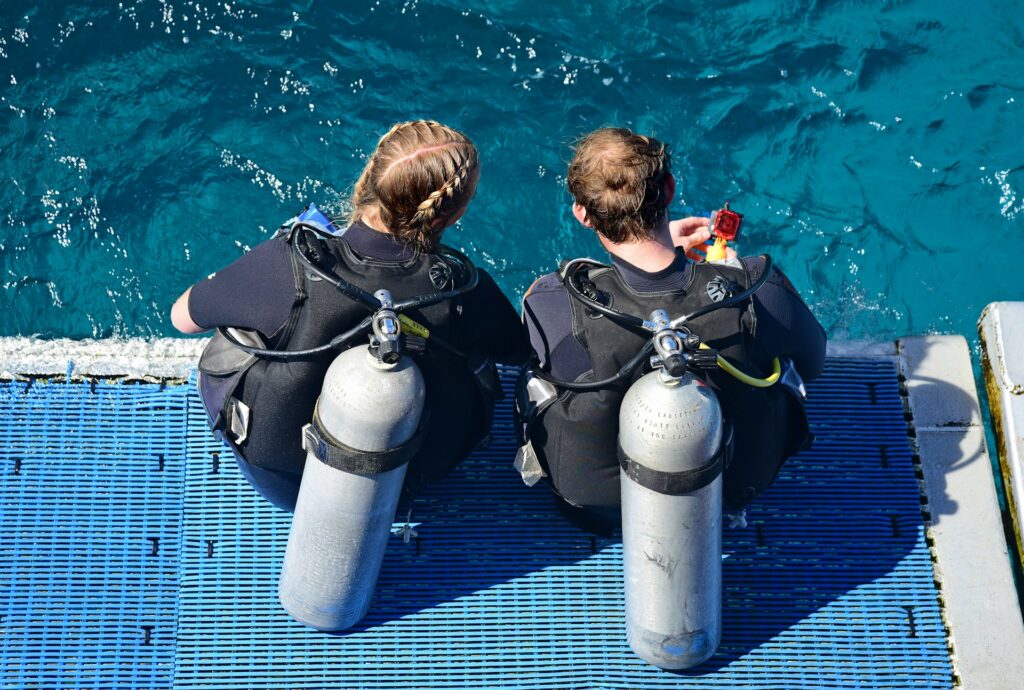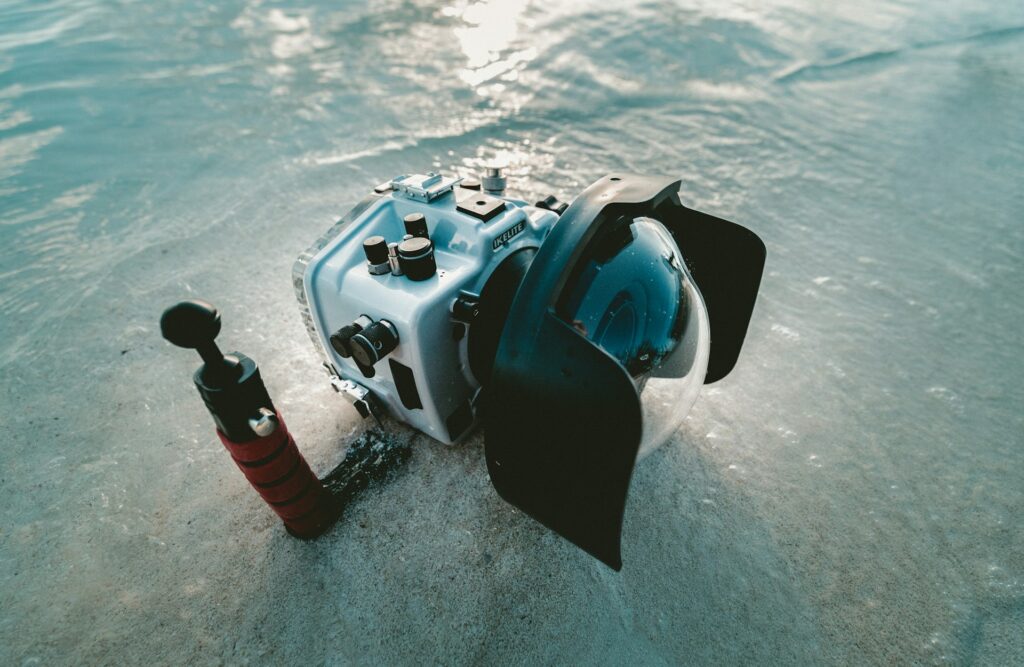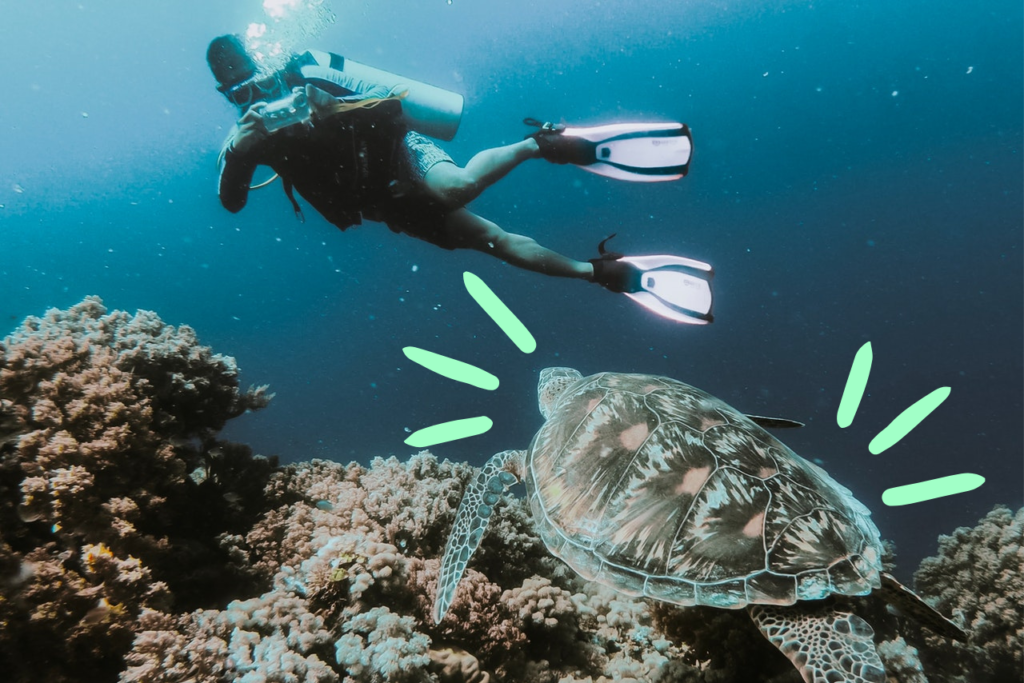Come on in, the water’s fine! Though 2025 seems to have seen a slew of shark attack stories in the news, scuba diving has never been more popular.
Indeed, since 1966 PADI (the leading scuba certification organisation), have issued over 30 million diver certificates globally. But so much of the success of a dive depends on luck; the weather, the visibility, the whim and want of those pesky sharks, the rays, coral and the rest.
There are some areas, though, where you can take matters into your own hands and exert a little control, most specifically your gear and accessories. With that in mind, here are 7 IDEAL scuba diving accessory must haves.
A Gear Bag
There are more incredible diving spots around the world than you could ever shake a snorkel at. And there’s a good chance that your bucket list is even more burgeoning. But when ticking off these places, you’ll quickly realise that packing and keeping track of all your gear can be a huge hassle. In the rush to get underwater, stuff can get misplaced, mixed up with the terra firma stuff, or heaven forbid, thrown overboard.
A scuba gear bag is a wise investment, then, allowing you to keep all of your accessories in one, convenient spot, and offering protection when the seas get choppy. Scuba diving gear bags are specifically built to stand up against salt water, the sun, and aggressive bag handlers, and when you’re committing this much time and money to your passion, it’s definitely worth giving it that extra protection.
You’ll also want to bring a dry bag with you. When you head out for a day of diving, you likely aren’t just bringing your diving accessories with you. Oh no, your life is coming along for the ride too and as such, your possessions are at risk of damage or worse. At the least, you’ll have your phone, towel, a change of clothes, a water bottle, and a snack or meal in tow and keeping all of this dry can be a challenge. A dry bag is a sensible investment to mitigate this risk.



Scuba Tanks & Cylinders
Sure, you’re probably thinking that cylinders should be in the ‘essentials’ camp, rather than being considered an accessory. After all, cylinders are essential in that, you know, they keep you alive down there, helping you breathe underwater for longer and ensuring you’re able to get deep, down and personal with the seabed.
The average aluminum 80-cubic-foot tank on a 12-metre dive will be able to provide air for about 45 to 60 minutes, with a safe amount in excess for the return to the surface. In recent years, however, the popularity of scuba cylinders has grown. Whilst not able to last as long as a tank (up to 12 minutes), these cylinders are worn under the chin, and are compact, lightweight and portable. What’s more, they can be filled up between turns using a hand pressure pump, and are well suited to diving beginners.
For those diving in fairly shallow waters, these compact cylinders are a great choice, and close to weightless underwater, leading to a liberating, flexible diving experience.
A Dive Light
If you think regular diving is an exciting experience, just wait until you try night diving. But, you can’t have a successful night diving experience without the right dive light. Because staring into the abyss with visibility low can be a frightening, rather than enlightening, experience. When shopping for a dive light, you’ll want to look for one that has multiple beams and light modes. And if yours comes with an emergency signal, even better!


A Dive Watch
A dive watch is to a scuba diver what a smartwatch is to a runner. For divers who like to keep meticulous track of their diving environment (something we should all be doing in the name of both safety and curiosity), such a device is an absolute necessity.
When shopping for a divers watch, look out for the following features:
- A watch that can withstand significant pressure due to the depth of the water
- A rotating bezel, which acts as a backup to digital timers. This is an extremely important function for divers. Divers have a limited amount of oxygen, and a rotating bezel will help them know when they are close to running out
- Luminescent dial features, which allow you to tell the time when diving in low light conditions
- A crown that screws down is also essential, preventing water from entering the watch
- A watch that’s made from rust and corrosion-resistant materials
- Magnetic and shock resistance
While this may seem like a lot, these features will allow you to have the best diving experience possible.
An Underwater Camera
There are moments under the water that simply have to be seen to be believed. The colours, the shapes, the reflections, the moving, grooving life….it can be such an overwhelming experience that when you come back up for air, describing all you’ve seen can be tough.
Such sights deserve to be captured, framed and logged, for posterity’s sake at the very least. Cameras specifically designed for diving are best for those keen on some serious snaps, with the GoPro Hero and Canon G7X range both producing professional shots of the deep blue. But for beginners, the iPhone camera, when combined with protective dive housing equipment, does the job brilliantly.
A scuba camera isn’t just about capturing memories – it’s about sharing the magic of the underwater world with those who’ve never experienced it. Modern dive cameras offer red filters to restore natural colours at depth and burst modes perfect for fast-moving fish. Having a camera underwater also changes how you observe your surroundings, making you notice smaller details and develop a keener eye for marine life.



A Dive Compass
Getting disoriented underwater is easier than you might think. Currents can shift your position, limited visibility can make landmarks disappear, and the underwater world can look surprisingly similar in all directions. Without a reliable way to navigate, what started as an exciting exploration can quickly turn into a stressful search for your exit point or dive boat.
A good dive compass is your underwater GPS, helping you maintain your bearings and navigate safely back to your starting point. Modern diving compasses are designed to work accurately even when tilted, and many feature luminous markings that remain visible in low-light conditions. Some advanced models even include digital displays with multiple waypoints and depth readings.
When choosing a dive compass, look for one with a rotating bezel that allows you to set and follow a specific bearing, a liquid-filled chamber that dampens needle movement for steady readings, and a design that can be easily read while wearing diving gloves. Many divers prefer wrist-mounted compasses for convenience, though handheld models often provide more precise readings.
Whether you’re exploring a new reef system, navigating back to an anchor line, or simply wanting to swim in straight lines during your safety stop, a reliable compass transforms navigation from guesswork into confidence. It’s the difference between ending your dive exactly where you planned versus spending precious air and time searching for familiar landmarks.
A Dive Knife
It’s a fact of scuba diving; it can, at times, be dangerous. Down deep, hazards can present themselves. If you get caught in a net or some other object underwater, how are you going to get out? With a trusty dive knife, of course.
Even though it is rare to get caught underwater, it’s always best to be prepared. A dive knife is better than a regular knife because it resists corrosion, can cut through nearly any material and comes in the perfect size to carry with you underwater.
If this has sparked your interest in all things scuba, then check out these reasons to go diving and explore the world’s oceans!





